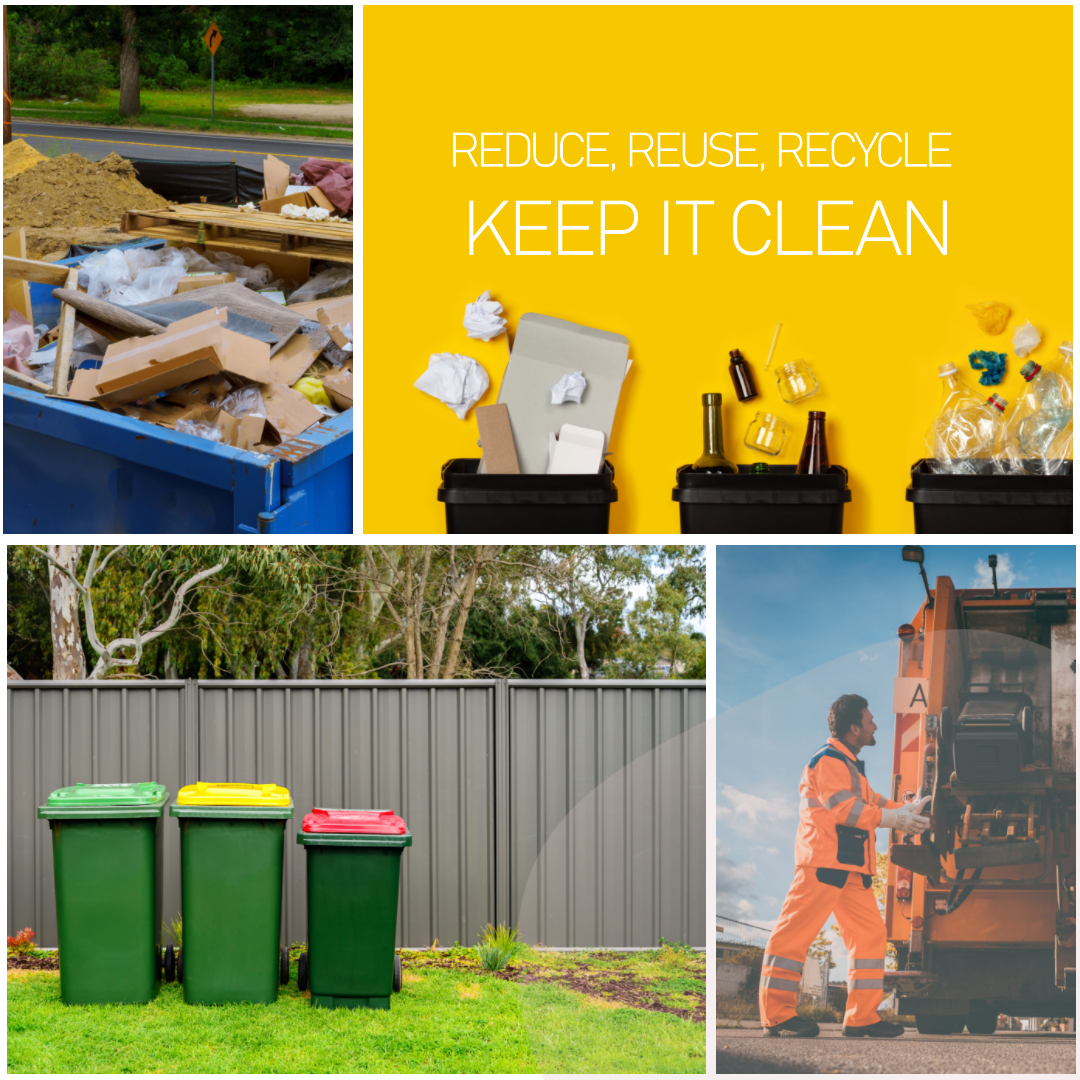Waste Management Plans

The email comes in at 2pm on a Tuesday.
Your council planner wants "detailed waste management information" before they'll approve your DA. Do you go with private collection or stick with council services? What about bin storage requirements? And why is the neighbouring development using a completely different approach?
Here's the thing: councils across Australia are demanding waste management plans that go far beyond basic compliance. If you're developing multi-unit housing in Melbourne or planning a mixed-use project in Sydney, you're probably discovering that what worked for your last project won't necessarily fly this time around. The goalposts keep shifting, and each council has its own interpretation of "adequate" waste management.
What's interesting is that the best developers are turning this regulatory complexity into a competitive advantage. They're not just meeting requirements—they're designing waste systems that reduce operational costs, improve resident satisfaction, and future-proof their developments against inevitable policy changes.
Let's walk through how to get this right, from navigating the policy maze to implementing systems that actually work in practice.
Policy reality: What's happening out there
Here's what we're seeing across Australia right now:
- Merri-bek Council provides shared bin services for developments over 20 units.
- Neighbouring councils, on the other hand, may require private collection for similar size developments.
- City of Sydney requires all new developments to complete comprehensive waste and recycling management plans meeting specific guidelines.
- Willoughby Council (NSW( has adopted technical guides prepared by the North Sydney Regional Organisation of Councils for multi-dwelling housing and mixed-use developments.
The regulatory complexity isn't accidental. Australia's waste management framework operates under state legislation like Victoria's Circular Economy (Waste Reduction and Recycling) Act 2021, but it's local councils making the day-to-day decisions that impact your project timeline and budget. What's more, these policies are evolving rapidly as councils grapple with waste infrastructure limits and community pressure for better recycling outcomes.
The developers who understand this landscape—and plan accordingly—aren't just avoiding delays; they're often saving $50,000 to $200,000 over the life of a typical multi-unit project by choosing the right collection strategy upfront. And more importantly, spatial impacts that may affect your development's yield.
So... what does your Waste Management Plan actually achieve?
A Waste Management Plan does more than tick compliance boxes—it creates a roadmap for how waste flows through your development from day one to decades ahead. However, the most effective plans go beyond waste disposal; they're designed to prevent waste in the first place.
Here's what a robust plan delivers:
Stakeholder clarity: Every party knows their role, from body corporate managers to collection contractors. This prevents the confusion that leads to contaminated waste streams and non-compliance issues down the track.
System compatibility that prevents expensive retrofits: Your waste approach needs to work with your building design and the surrounding infrastructure. We've seen developers spend $80,000 post-construction to modify bin storage areas because they didn't consider collection truck turning circles during the design phase.
Operational systems that residents actually use: Poor planning creates frustrated occupants within months. Think about the apartment complex where residents dump everything in general waste because the recycling area is too far from the lift, or the commercial building where overflowing bins become a health hazard because collection frequency wasn't properly calculated.
Long-term cost control: A well-designed system locks in predictable waste management costs over the building's operational life. Conversely, we've seen strata fees increase by $400 per unit annually when poorly planned waste systems require expensive private collection upgrades.
Understanding waste streams
Every development generates multiple waste streams, or types of waste, and each requires a different approach.
In practice, you'll need to plan for:
- Construction and demolition waste remains the largest volume during development phases. Additionally, much of this material can be diverted from landfill through strategic partnerships with recycling facilities.
- General waste forms the baseline for residential and commercial operations. Nevertheless, the proportion of general waste is shrinking as recycling requirements expand.
- Recyclables including glass, paper, and cardboard now require separate collection in most jurisdictions. Furthermore, contamination rates directly impact the viability of your waste management costs.
- Organic waste is increasingly regulated under food waste diversion policies. As a result, commercial kitchens and multi-unit developments need composting or processing solutions.
- Hazardous materials including e-waste and clinical waste demand specialised handling. Consequently, your plan must identify licensed disposal pathways early in the design process.

Common pitfalls and how to avoid them
After reviewing and preparing hundreds of waste management plans, we've identified the mistakes that cost developers time, money, and approval delays:
Underestimating bin storage space: Council guidelines suggest minimum areas, but real-world usage often requires 20-30% more space. The fix? Calculate based on peak occupancy scenarios, not average usage.
Ignoring collection vehicle access: That narrow driveway might work for residents, but can a 12-metre waste truck navigate it twice weekly? Site visits with collection contractors during design prevent costly modifications later.
Overlooking contamination rates: Mixed recycling streams can result in entire loads going to landfill, plus contamination fees averaging $150 per incident. Design for human behaviour—clear labelling, convenient access, and regular maintenance.
Choosing collection services based on price alone: The cheapest quote often comes from contractors without proper council approvals or adequate insurance. Due diligence on collection partners prevents service disruptions and liability issues.
Strategic approaches that actually work
Developing an effective waste management strategy requires matching your approach to both the building type and the local context.
Based on our experience across the various states and different building types, these strategies deliver the most reliable outcomes:
Source separation systems need to balance sorting complexity with real-world behaviour. Risk arises when developers underestimate the infrastructure needed for proper sorting. Here's the real problem: we constantly see developments with only one general waste bin or chute per floor or common area, forcing residents to walk to basement storage for recycling. The result? Everything goes in the general bin, contamination rates hit 60-80%, and the entire recycling program becomes pointless.
Victoria's standardised 4-bin system (general waste, mixed recycling, glass, organics) recognises that successful sorting requires convenient access to all streams. When residents face a choice between walking three floors to recycle or using the general bin right outside their door, human behaviour wins every time. Key insight: if any waste stream requires more effort than general disposal, that stream will be contaminated. Design for convenience across all categories, or accept that your recycling program exists only on paper.
Private vs council collection decisions often come down to building access, kerbside dimensions, council policy, and long-term costs. For instance, we helped a Drysdale developer choose private collection over council services, due to the complex site layout and steep council requirements. Which offered them better service flexibility. The key was designing truck access that didn't compromise parking ratios.
Technology integration is becoming essential for larger developments. Glass crushers, organic waste dehydrator, can reduce the volumes of waste generated—and by extension, the number of bins required.
The most successful projects combine multiple strategies, creating redundancy that ensures the system continues working even when individual components face challenges.
Best Practices From the Field
After working with councils, developers, and building managers across Australia, we've identified the practices that separate successful waste management plans from compliance-only approaches:
Conduct comprehensive waste audits before finalising your design. This means understanding not just waste volumes, but the specific materials your building type generates and how occupant behaviour influences waste patterns.
Establish measurable targets that go beyond regulatory minimums. For example, aim for specific diversion rates from landfill or contamination thresholds for recycling streams.
Design for human behaviour, not ideal scenarios. This includes providing adequate bin capacity for peak periods and ensuring waste areas remain clean and accessible year-round.
Build in monitoring systems that provide ongoing data on waste management performance. Digital tracking helps identify issues before they become compliance problems.
Plan for adaptation as waste streams and regulations continue evolving. The buildings we design today will operate under different waste policies by 2050, so flexibility is essential.
Looking Ahead: What's Coming Next
The regulatory landscape will continue tightening, particularly around embodied carbon in construction waste and food waste diversion in commercial buildings. At the same time, we're seeing innovations in waste-to-energy technology and local processing facilities that create new opportunities for developers willing to think beyond traditional disposal methods.
As these changes accelerate, the developers who invest in comprehensive waste management planning today will find themselves ahead of regulatory requirements and better positioned for long-term operational success.
What Happens When You Contact Makao
When developers reach out to us, they're usually facing a specific deadline—council wants waste management details within weeks, not months. Here's how we typically work together:
- We audit your development plans against local council requirements and identify any potential approval roadblocks. You'll get a clear picture of private versus council collection options, with actual cost projections for both.
- Our team develops your waste management strategy, complete with scaled drawings and compliance documentation. We coordinate with your architect to ensure bin storage areas integrate seamlessly with your overall design.
- You receive a complete waste management plan that meets council requirements and includes contractor recommendations, ongoing operational guidance, and contingency plans for service disruptions.
The result? DA approvals proceed on schedule, and you avoid the expensive retrofits and operational headaches we see in poorly planned developments.



















